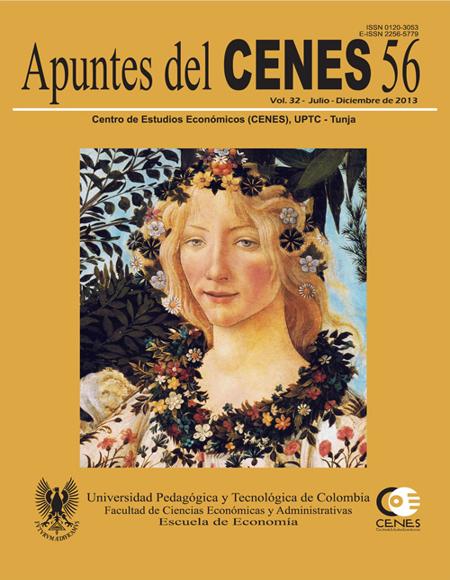The 1935 tax reform and the strengthening of direct taxation in Colombia
DOI:
https://doi.org/10.19053/22565779.2442Keywords:
Economic history, direct taxation, economic policy, tax policyAbstract
This paper explores the most relevant elements of tax reform proposed and implemented by President Alfonso López Pumarejo in 1935, during his first term of government. The reform was implemented fundamentally through Act 78 of 1935 and complemented by means of Act 63 of 1936. It is one of the important changes made during the period of the so-called “ongoing revolution”. One of the most relevant elements of the reform was the consolidation and strengthening of the direct taxes of Colombia using as principal instruments the increase of income tax and the creation of the taxes to the excess profits and estate tax. The new tax resources constituted an important source of financing of the comprehensive program of reforms and policies proposed by the government of President López.
Downloads
References
Alviar, O. & Rojas, F. (1985). Elementos de finanzas públicas en Colombia. Bogotá: Temis.
Banco de la República. (1994). Principales indicadores económicos 1923-1992. Bogotá: Banco de la República.
CongresodeColombia. (1931, diciembre). Ley 81 relativa al impuesto sobre la renta. Bogotá: Imprenta Nacional.
Congreso de Colombia. (1935, diciembre). Ley 78, por la cual se reforman las disposiciones vigentes del impuesto sobre larenta, se aumentalatarifa, se establecen unos impuestos adicionales y se suprimen otros. Bogotá: ImprentaNacional.
Congreso de Colombia. (1936b, marzo). Ley 63 de 1936, por la cual se organizan los impuestos sobre la masa global hereditaria, asignaciones y donaciones. Bogotá: Imprenta Nacional.
Giraldo,C. (1994). Estado y hacienda pública en Colombia 1934-1990. Bogotá: Contraloría General de la República.
Kalmanóvitz, S. (2003). Economía y nación: Una breve historia de Colombia. (2ª ed.). Bogotá: Norma.
López, A. (1979). Obras selectas. J.M. Eastman (comp.). Bogotá: Imprenta Nacional, Cámara de Representantes de Colombia.
López, H. (1998). Tributación y falta de legitimidad en Colombia. En Cuadernos de Economía, Universidad Nacional de Colombia, (28), 151-162.
Lleras, C. (1975). Borradores para una historia de la República Liberal.Vol. 1. Editorial Nueva Frontera, Bogotá.
Ministerio de Hacienda y Crédito Público (1936): Memoria de hacienda, 1935- 1936. Bogotá: Nueva Frontera.
Ministerio de Hacienda y Crédito Público. (1941). Memoria del ministro de Hacienda y Crédito Público al Congreso Nacional de 1941. Bogotá: ImprentaNacional.
Molina, G. (1986). Las ideas liberales en Colombia. De 1935 a la iniciación del Frente Nacional (7ª ed.). Bogotá:Tercer Mundo.
Ocampo, J.A. & Montenegro, S. (2007).Crisis mundial, protección e industrialización. (2ª ed.). Bogotá: Norma.
Presidencia de la República de Colombia. (1934b, diciembre). Decreto 2429, sobre la modificación del impuesto de renta.
Bogotá: Imprenta Nacional.
Presidencia de la República. (1934c, diciembre). Decreto 2432, sobre la creación del impuesto sobre exceso de utilidades. Bogotá: Imprenta Nacional.
Urrego,M. (2005). La revolución en marcha en Colombia (1934-1938): una lectura en perspectiva latinoamericana.Michoacán, Méjico: Universidad Michoacana de San Nicolás deHidalgo, Instituto de Investigaciones Históricas.
Downloads
Published
How to Cite
Issue
Section
License
Copyright (c) 2013 Oliver Mora Toscano

This work is licensed under a Creative Commons Attribution-NonCommercial-ShareAlike 4.0 International License.






